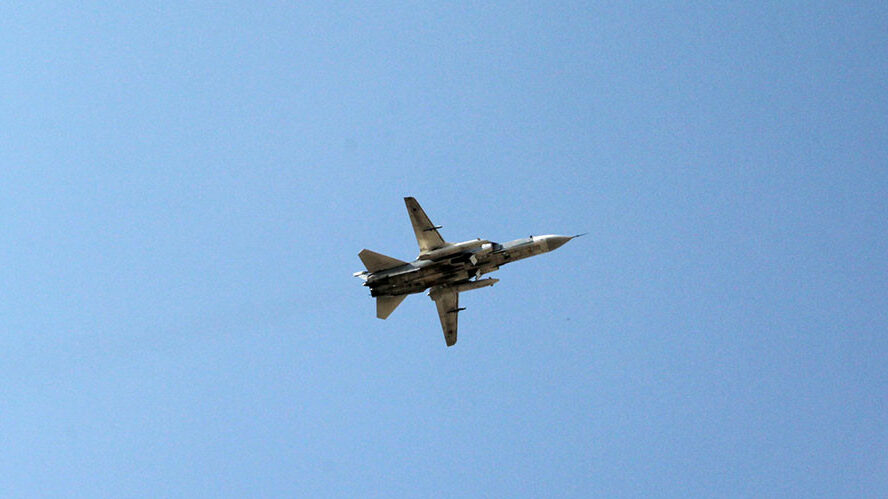
A Russian Su-24 strike aircraft in the sky over the Khmeimim airbase in Syria. Photo: Dmitriy Vinogradov / RIA Novosti
On May 26, Russian warplanes carried out a series of airstrikes on the northwestern Syrian region of Greater Idlib, which is controlled by al-Qaeda-affiliated Hay’at Tahrir al-Sham (HTS) and several other terrorist groups, for the first time in more than five months.
At least four airstrikes hit the outskirts of the towns of Fleifel and Sufuhon in Zawiya Mountain in the southern Idlib countryside. Photos that surfaced online after the airstrikes showed a large cloud of dust and smoke rising from the mountainous area. No casualties were reported.
Following the airstrikes, the Syrian Arab Army (SAA) carried out a series of artillery strikes, targeting several villages and towns in Zawiya Mountain.
The Russian airstrikes were the first to target Greater Idlib since December 3, when several positions of HTS in the town of Kabani in the northern Lattakia countryside were hit.
In the last few months, HTS and its allies violated the ceasefire in Greater Idlib, which was brokered by Russia and Turkey more than three years ago, hundreds of times, launching direct and indirect fire attacks as well as raids from the region on a regular basis.
A field commander of HTS was killed a just day earlier, on May 25, near Kabani as a result of retaliatory artillery fire by the SAA.
The recent escalation by HTS in Greater Idlib is an attempt to sabotage the ongoing Turkish-Syrian normalization process, which is sponsored by both Russia and Iran. To this day, Ankara maintains a large military presence in the region. The terrorist group fears that a deal with Damascus could lead to a Turkish withdrawal.
The Russian airstrikes on Greater Idlib are likely meant to deter HTS in order to stabilize Greater Idlib and reinforce the ceasefire.
MORE ON THIS TOPIC:





